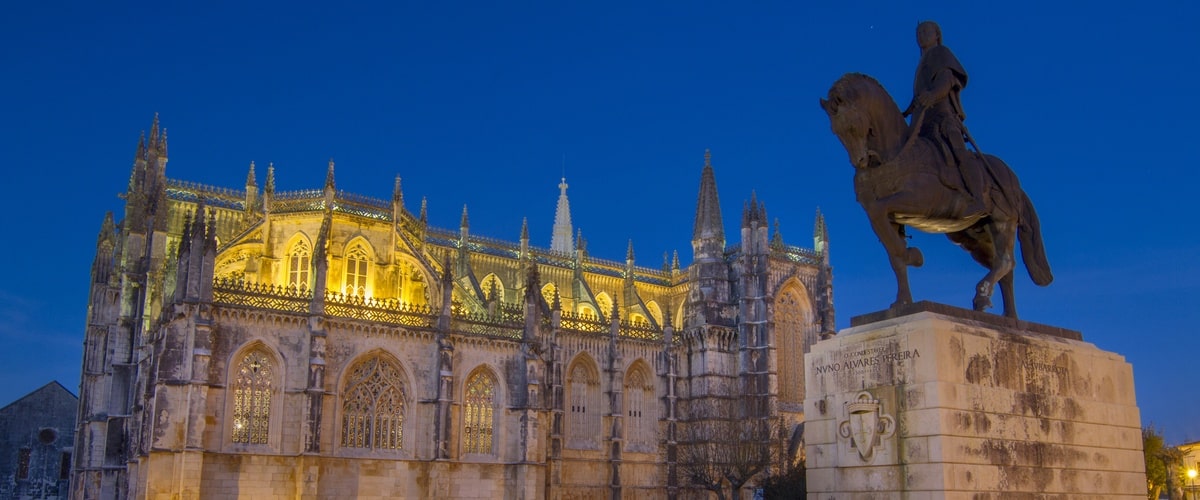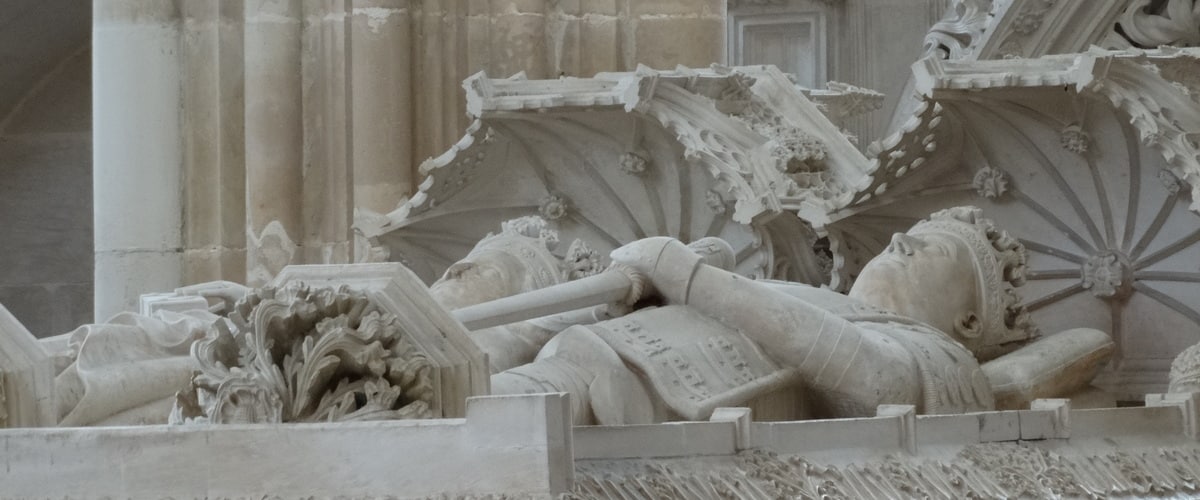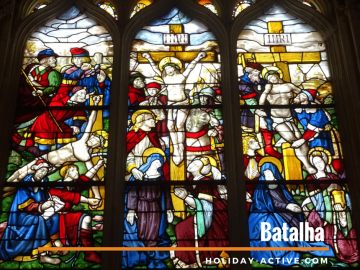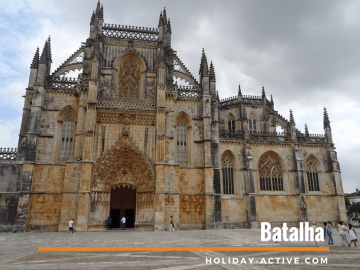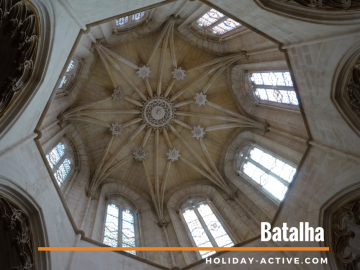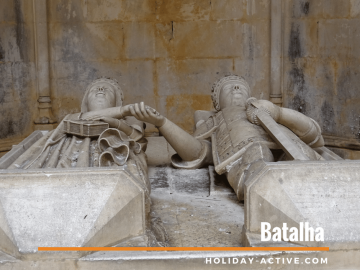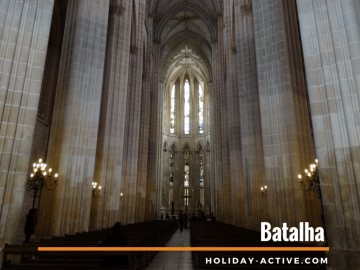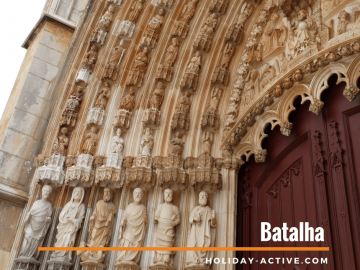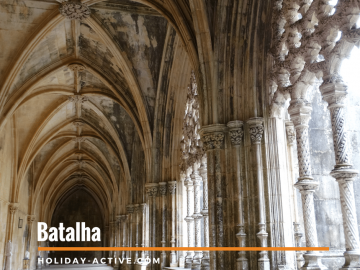Batalha
The town of Batalha grew mainly due to the Monastery of Santa Maria de Vitória, mostly known as the Monastery of Batalha.
More than what to visit in Batalha is understanding its significance. Follow the story behind this impressive monument fruit of a king’s promise for a battle won and the guiding hand of his wife.
What to visit in Batalha
Monastery of Santa Maria da Vitória
The town of Batalha grew mainly due to the Monastery of Santa Maria de Vitória.
The Monastery of the Batalha or Monastery of Santa Maria da Vitória (Victory) is the fruit of a vow made to the Virgin Mary by the recently acclaimed king D. João I on the eve of the Battle against Castille.
Should he come out victorious in the Battle of Aljubarrota held nearby, on the 14ty of August of 1385, thus Portugal remaining independent, he would order the building of a monastery.
D. João I gave the monastery to the Dominican Order, to which his confessor belonged.
Inside, not to be missed:
The Church, whose grandeur (80 meters long, 22 meters wide and 32 meters high) leaves no one indifferent. Due to the time it took to complete the church, its construction was lead by 2 different masters: First the Portuguese Afonso Domingues and then by the french Huguet.
The Chapel of the Founders where D. João I and D. Filipa de Lencastre are buried. The first Royal Pantheon and marital tomb in the history of Portugal. In the chapel’s centre, the tomb of D João I and D. Filipa de Lencastre displays their effigies, hand in hand, the most crucial matrimonial gesture. On the south-facing back wall is another set of monuments. Here lie the sons of this royal couple and baptised by Camões as the “Illustrious Generation.”
The Imperfect or Unfinished Chapels, profusely decorated in a Manueline and Gothic style, were designed by D. Duarte for his family’s pantheon. The premature death of this king and then of the architect himself prevented the work from being completed.
The Chapter room was started in the reign of D. João I and finished only in time of his grandson, Afonso V. Today; it is here that the remains of 2 unknown soldiers of the Great War are buried, entitled to Guard of Honor, changing hourly.
The Royal Cloister was started by Afonso Domingues and finished by Huguet, who essentially respected the first master plans. During the reign of D. Manuel I, the Royal Cloister was ornamented with exquisite carvings that fill the upper third of the windows. They are among the earliest so-called Manueline artwork.
The washbasin is situated near the refectory and still uses the original water supply. Hand washing before meals was an important ritual, but this place also served the friars’ personal hygiene.
In Batalha Monastery, you will find the first stained glass window in the country and the first cloister with a top floor.
The new cloister added to the monastery in Afonso V’s reign is built in the sober style shared by other royal buildings of that period.
Upstairs are the friar’s and novice’s cells as well as the library and archives. Ground floor rooms include a larder, a firewood stock, the olive oil deposit, a wine press and workshops.
The Monastery of Batalha is classified as World Heritage by UNESCO.
Batalha de Aljubarrota - Interpretation center
The Battle of Aljubarrota took place in the late afternoon of August 14, 1385, between Portuguese troops with English allies, commanded by D. João I of Portugal and D. Nuno Álvares Pereira, and the Castilian army and its allies led by D. João I of Castile. A decisive battle in the history of Portugal that lasted only a few hours and that used innovative military tactics
The result was the defeat of the Castilians, the end of the crisis of 1383-1385 and D. João I, formerly the Master of Avis, was made the king of Portugal.
The Luso-anglo alliance was strengthened from this battle and would be sealed a year later, with the signing of the Treaty of Windsor and the marriage of King João I to D. Filipa de Lencastre. This alliance still lasts and is the oldest ever established.
From this battle, the legend of “Padeira de Aljubarrota” is created. A strong and tough woman, named Brites de Almeida, who after travelling the world pedalling at fairs and being sold as a slave, returned to her homeland, becoming a baker. On the day of the battle, after having fought in it, she entered her home to find 7 Castilians hidden in the oven which she promptly killed with her baking shovel
The Interpretation Center of the Battle of Aljubarrota is located in the town of São Jorge,
Address: Av. D. Nuno Álvares Pereira, nº 120, São Jorge.
2480-062 Calvaria de Cima
You may also like to see
Pia do Urso
Pia do Urso is just a few minutes from Batalha. A restored village that maintains all its typicality.
It is located on the old Roman crossroads that linked Lisbon to Batalha. This was the path that D. Nuno Álvares Pereira troops took when coming from Ourém to fight the famous Battle of Aljubarrota. However, they took advantage of this heavenly place to stop and rest.
A village focused on tourism with the particularity of having a “sensorial” pedestrian path, that is especially landscape for the blind. Here you can appreciate the beauty of the Sensorial Eco-Park, its flora and fauna, and various geological formations, called “pits”, one in particular where a bear would come to drink water giving rise to the name of the village: Pia do Urso. (Bears Pit)
Bears were extinct in Portugal around the 18th century only surviving a few in the Iberian Peninsula in Asturias Region.
Personalities related to Batalha
D João I - The beginning of the Avis Dynasty
The Illegitimate son of D Pedro I and D. Teresa Lourenço
D. Pedro, I married the Castilian Infanta D. Constança Manuel with whom he had a son D. Fernando. However, this does not prevent him from falling in love with her lady in waiting, D Inês de Castro with whom he had two sons D. João and D. Dinis. Protogoniziing one of the greatest Portuguese love stories, in which a distraught king crowns his beloved, already dead queen. After the death of D Inês de Castro, D Pedro I had a fourth son, D. João, with D Teresa Lorenço.
D Pedro I is succeeded by his legitimate son, D. Fernando I
D Fernando I takes D Leonor Teles de Menezes from her husband, in order to wed her. Such an act was never well accepted, neither by the people nor by the nobility. They had one legitimate heir D Beatriz, married at the age of eleven to King Juan I of Castile.
Seeking to safeguard the sovereignty of the Portuguese kingdom, avoiding the union of the Iberian crowns, the Treaty of Salvaterra was established, a prenuptial agreement that handed over the regency of Portugal to Queen Leonor Teles, until an heir born of D. Beatriz and D. Juan de Castela was old enough to take the Portuguese throne.
However, Leonor’s government was short-lived: After the death of Fernando I and shortly after the marriage of his daughter, the Castilian king did not comply with the agreement and invaded Portugal.
The Count of Andeiro was a Galician nobleman and one of the most influential figures in the Portuguese court of the time. Not only did he enjoy special favour from king D. Fernando, as he had a personal connection to Dona Leonor, rumoured to be her lover. When the king died, the burghers of Lisbon and some sectors of the nobility unhappy with the queen’s regency and the growing power of the Count of Andeiro gathered around D João, Master of Avis and illegitimate son of D. Pedro.
Thus, urged by general discontent, on December 6, 1383, D. João, Master of Avis, together with Nuno Alvares Pereira, assassinated the Count of Andeiro. With this act begins a succession of events that will give him the regency of Portugal
The new king D João I, along with Nuno Álvares Pereira, defeated the Castilians in several battles. Being the most striking and decisive, the Battle of Aljubarrota in 1383.
In 1387, D Joao I married Dona Filipa de Lencastre, daughter of John of Gaunt, Duke of Lancaster, strengthening by family ties the agreements of the Treaty of the Anglo- Portuguese Alliance, which lasts until today.
D. Filipa never lost her English habits and, by its influence, new customs entered the Portuguese court.
Their sons, designated by the poet Luís Vaz de Camões, in the Lusíadas, as the “Illustrious Generation” received from their parents an enlightened education.
D. Duarte I, during his five years of reign, continued the policies of maritime expansion and conquests in Africa.
D. Pedro was one of the most enlightened princes of his time and much travelled. He was regent of D. Afonso V of Portugal, his nephew.
D. Henrique, the navigator. Grand Master of the Order of Christ invested (his?) fortune in the research of navigation, nautical techniques and cartography. He was a great advocate and promoter of the Portuguese Discoveries. This is why the Portuguese caravels carried in their sails the Cross of Christ
D. Isabel of Portugal, their only daughter married the Duke of Burgundy and entertained a refined and erudite court in his lands.
D. Fernando followed his brother D. Henrique on an expedition that landed in Morocco with the purpose of conquering Tangier in 1436. The Portuguese army was surrounded by the Moroccans. The Moors allowed the Portuguese to re-embark, but on the condition of returning Ceuta, which had been taken in 1415. D. Fernando was left as a hostage in captivity. This condition was never satisfied and D. Fernando ended up dying in prison in Fez, June 5, 1443.
In order to control navigation on the coast of Africa, D João I took 1415 the city of Ceuta. It was also during the reign of D. João I that the islands of Porto Santo (1418), Madeira Island (1419) and the Azores (1427) were discovered, as well as expeditions to the Canaries.
D João I died in 1433. He rests in the Chapel of the Founder along with his wife D Filipa de Lencastre and the “Illustrious Generation” in the Monastery of Santa Maria da Vitória in Batalha.
What to visit in Batalha: Handpicked Tours
We use affiliate links which means we get a small commission if you book through them. This does not in any way affect the end price but helps us keep this site updated. We have selected what to visit in Batalha and the top tours we believe to be the most relevant and with an insider’s knowledge.
Enjoy Portugal with holiday-active.com and make the most of your holidays in Batalha
What to visit in Batalha a must see historical site
Holiday-active.com will help you find your perfect place to stay
Where to stay in Batalha? Our Suggestions

Mosteiro View
About 30 meters from Batalha Monastery, in one of the liveliest squares in the village, very close to the main shopping areas, restaurants and bars. However, it is still very quiet and tranquil.
A completely refurbished building offering small apartments with fully equipped kitchens
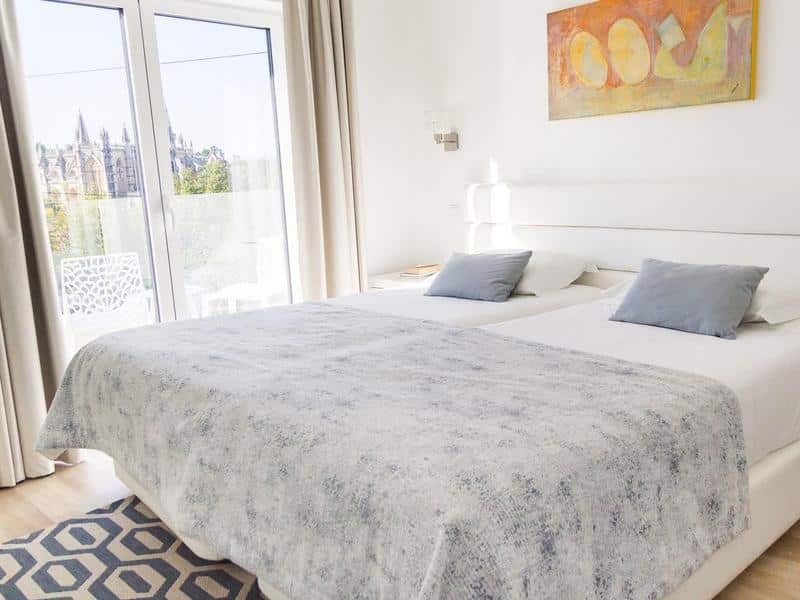
Hotel Casa Do Outeiro
Located in Batalha, Hotel Casa d Outeiro offers panoramic views of the Santa Maria da Vitória Monastery. Most rooms have a private balcony, and some overlook the monastery.
It has a swimming pool, a cheerful and unpretentious decoration that makes the spaces unique and cosy. A hotel recommended for those travelling with children

Luz Charming Houses
500m from the Sanctuary of Fátima Luz charming houses emanate tranquillity. 3 houses with 15 rooms – 6 of which are suites with kitchenette, large windows to the garden, decorated with stone, wood and cement slabs in an intimate and welcoming atmosphere—a place to relax and recharge.

The Olive Hill Guesthouse
The Olive Hill Guesthouse is 3 km from Batalha and offers cosy cottages with a patio or a balcony, as well as a restaurant and a seasonal outdoor swimming pool.
What to visit in Batalha a must see historical site

 English
English

